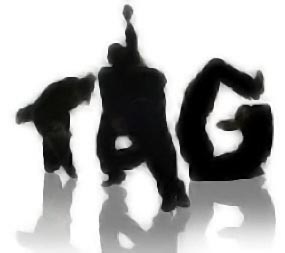


3/11/14
Analogy between the calligraphy and the art of the graph
|
The delicate movements of the hand on the paper, those of the draftsman, take a particular dimension when the text and the aesthetic curves get married and give life to the calligraphy.
The Latin, Arabic and Chinese calligraphy are the most remarkable of the history.
the kanji "Aïkido" The Japanese calligraphy arose from the education delivered by Chinese Buddhist monks, who passed on this art in Japan in 500 before J.C. Do not forget that almost all the Japanese culture was copied by the Chinese culture: tea, bonsais, silk, martial arts, etc. …
Spring Towards 210 before Christ Li Sseu declared: " in the writing of a character it is not only the composition which matters, but it is also the strength of the bow. Make that your line dances as the cloud in the sky, sometimes heavy, sometimes light. It is only while you will fill your spirit of what you make and you will arrive at the truth. "
Caves lived by the first men are often covered with marks and with drawings, it is to say if this usage which consists in writing on walls is ancient. In the streets of Pompéï, preserved thanks to the eruption of Vesuvius, we found graffiti in the form of marks on walls scratched in the knife, and the more elaborated paintings. Since the 60s, when we speak about graffiti, we think of tags in the public transportation. It is rare that graffiti in the subway are written in the lead pencil. Graffiti in the marker and in the spray painting were born with the hip-hop, but fed on diverse influences, of which the East is a part. Associated with the crime and the degradation of the public places in first time, the image of this practice became more differentiating with talented draftsmen's arrival. While he was Minister of Culture, Jack Lang incurred the lightnings of the Figaro by raising the graffiti to the rank of art! |
 |
|
 |
Born in the United States at the end of the 60s, tags were at first only a way to shout its name. Certain taggers evolved towards other thing. At the beginning of 1970s, the reams of the subway of New York and certain streets of Brooklyn were literally covered with graffiti. It is obviously over there that the first recognized artists entered art galleries. France, with ten years of delay on New York, also knew its important faces. It is naturally in Bets where the movement took its flight. The anti-authority posters style in May 68 and the "stencils" of famous artists thus lived with this invader that was the graph in the period. The artistic sense of the debuts is a little breathless, we find now the most beautiful works in galleries. The street-art became respectable and it is the culture hip-hop which fills streets and pallissades of the capital... The major transportation company in Paris, RATP, doesn't seem to like this kind of space occupation !
The fight against the graffiti began just after its birth, and it lasts even today. Difficult to defend those who degrade the public places, and it is necessary to admit that it is not always beautiful a graffiti! The most common term, when we speak about damages, is the " visual pollution ". We shall leave to each the care of choosing what a pollution is the most dangerous! At present, it is the collectives anti-pub that are in the collimator of the public transportation. Certain walls are cleaned to be covered with new frescoes the next day, it is thus a little bit hopeless to lead this fight. A wall of clear color is as a blank page, rare and desired object. The place is rare. It is badly seen to cover the graffiti of the other one by his. In the community of graffeurs, it is as a declaration of war.
The fact of painting without authorization on a wall is punished by the law. It is at least about a 7 500-euro fine and about a condemnation which can go of the work of general interest to a prison sentence, according to the gravity of the facts In this context, certain artists by-pass the law. There is the one who cleans walls with certain places to make a drawing in black and white. Difficult to stop somebody who returns service! Or those who cut posters with a cutter to make art to three dimensions. I do not know if we can be reprimanded for that.
By beginning by writing his name, its nickname rather, we are obliged to cross it by the typography, and even the calligraphy. The aesthetic aspect of the drawing deforms letters, by examples the straight lines can become curved and conversely. Make a message pass is not compulsory, the best graffeurs are surely those who knew how to fire of their imagination of the abstract and suggestive forms. The subtle balance between the work of art and the text is according to me the sign of a successful work. The legibility is surely no purpose in itself, the illegibility either. Is not the calligraphy this marriage between the sign and the significant?
Those who master the writing always had a social status: scribes, monks, public letter-writers... The artists of street are far from having this type of recognition. Some however managed to bring out there. FTP |
 http://www.calligraphie-japonaise.fr/index.html
http://www.calligraphie-japonaise.fr/index.html
 http://fondation.cartier.com/?_lang=fr&small=0&i=143692 Born in the street: exhibition from July 7th till November 29th, 2009.
http://fondation.cartier.com/?_lang=fr&small=0&i=143692 Born in the street: exhibition from July 7th till November 29th, 2009.
 http://www.tagaugrandpalais.com/
http://www.tagaugrandpalais.com/
 : 1420 visites
: 1420 visites